Durable and Reliable Under All Conditions: What Makes Piezo Actuators Suitable for Industrial and Space Applications?
Piezo actuators convert electrical energy directly into mechanical energy and allow for motions with a resolution in the sub-nanometer range. They achieve travel up to approximately one millimeter and high dynamics with frequencies up to several thousand Hertz. There are no frictional parts to limit resolution, also no mechanical wear, as motion is based on crystalline solid state effects. Therefore, piezo actuators are the ideal drive solution for many precision applications in industry, life sciences, microscopy, medical engineering and research, and have meanwhile even proven themselves in space.
The service life and reliability of piezo actuators strongly depends on the environmental conditions at the site of application. Humidity, temperature and operating voltage are of considerable influence. Since no polymer insulation exists that is absolutely impermeable, the life expectancy for conventional, polymer-insulated piezo actuators can decrease dramatically at high humidity. Ingressing moisture and the electric field applied can then cause chemical reactions in the component, which are accelerated by higher temperature. The result is initially an increased leakage current and finally a dielectric breakdown, that is a short circuit between the electrodes, which can cause irreparable damage to the actuator. During dynamic operation, the service life of the piezo is affected by dynamic forces and alternating mechanical stress conditions, cracks can often lead to failure quickly in such cases. The answer lies in optimized materials and manufacturing processes, appropriate design and, last but not least, the choice of suitable insulation. Then there is nothing to stop their use even in space.
Decisive Factors: Choice of Materials, Manufacturing Processes and Insulation
The PICMA® piezo actuators (Image 1) supplied by PI Ceramic (see company box) are a good example. However, manufacturing these multilayer actuators with their long service life even under difficult environmental conditions makes high demands (Image 2):
First, the ceramic material, which is based on a special PZT ceramic (lead zirconate-lead titanate), is ground to make a slurry from which thin ceramic foils are cast. Next, electrodes are screen printed and the layers are laminated to stacks. The ceramic is compacted to remove the air trapped between the individual layers and then sintered together with the electrodes (cofiring technology) to create a monolithic block. This is protected against humidity and failures due to increased leakage current by an all-ceramic insulation layer. Due to this, the reliability and the lifetime are high. The monolithic design furthermore causes a high resonance frequency, which makes these actuators ideally suited to highly dynamic applications. The ceramic is not flexible, the motion is fully based on solid state effects. The dynamics of the reversal process are determined by the electrical contacting and the control electronics.
The exclusive use of inorganic materials, not only for insulation, but also for the electrical contact, at the same time results in optimal conditions for use in ultra-high vacuum, as there is no degassing. The monolithic piezo ceramic stack achieves excellent reliability, even under extreme ambient conditions, and also extends the service life by several orders of magnitude. This also applies to applications under space conditions at a temperature close to absolute zero and under high vacuum. For example, the PICMA® piezo actuators are used in the sample analyzer system of the CheMin laboratory unit of the Curiosity Mars rover (Image 3).
100 Billion Cycles without Failures or Loss in Performance
The CheMin instrument performs chemical and mineralogical analyses on Mars rocks. For supply with suitable rock samples, the rock powder first has to be sorted. To this end, the powder is shaken at various amplitudes and frequencies in the range from 0.9 to 2.2 kHz to achieve homogeneous particle sizes or separation according to density. This task is performed by the PICMA® multilayer piezo actuators. They carry out the oscillations required in material selection and supply at a defined frequency.
In advance, the piezo actuators had to pass extensive qualification and testing prior to being allowed on board. In particular, their service life was tested, after all, a 2.5 billion dollar project could not fail due to an actuator. Here, the PICMA® actuators were able achieve impressive results: The extensive NASA performance and service life tests showed that 96 % of original deflection were still achieved after 100 billion (1011) cycles (Image 4). Therefore, they were chosen among a number of different tested piezo actuators for the science lab in the Curiosity Mars rover.
Minimizing Negative Influences: Stress Loading and Humidity
To increase the service life of piezo actuators for such dynamic applications it is essential to reduce to probability of cracks. This is where the patented slot design of the PICMA® actuators comes into play, as it minimizes the tensile load. The lateral slots prevent an increase in mechanical tensile stress in the stack and thus counteract the formation of uncontrolled cracks (Image 5). Furthermore, the patented meander-shaped construction of the termination electrodes (see Img. 6) ensures all internal electrodes have a stable electrical contact even at extreme dynamic loads. This is why the PICMA® actuators show no signs of wear, even after many billion test cycles, whereas the pronounced mechanical stress can lead to cracks in the stacks of other designs in a worst case scenario, in turn resulting in electrical breakdown.
Humidity can negatively affect piezo actuators in low-dynamic nanopositioning applications. Very often, constant voltages are applied to the piezo actuator for prolonged periods. In the case of very high humidity and voltage values, then, as already mentioned above, this can lead to electro-chemical reactions which release hydrogen molecules which then destroy the ceramic composite by embrittlement. Due to their inorganic insulation, the PICMA® actuators were also able to deliver convincing results here (Image 7).
Positioning tasks in the manufacturing of semiconductors are a typical example of where resistance to humidity is important. High and constant offset-voltages are usually employed here, for example, to keep wafers in a stable position during lithography and inspection. During this process, the clean rooms are artificially humidified to prevent electrostatic flashovers. Specifications between 50 and 65 % relative humidity are therefore not uncommon. Cooling liquids in mechanical engineering applications are a further cause of increased ambient humidity.
Low Operating Voltage
Stable, reliable operation is also important in many other fields of application such as white-light interferometry (WLI) which is often used for inspection tasks in LCD production for example, or for high-precision surface inspection in other manufacturing fields. The effect that the applied voltage has on the lifetime, is particularly important. At 80 V, for example, the service life to be expected is 10 times higher than that to be expected at 100 V. PICMA® actuators are also a step ahead in terms of operating voltage: In contrast to most conventional actuators they achieve their nominal displacement at operating voltages significantly below 150 V. This property is achieved with particularly thin ceramic layers.
Using modern production technologies, the multilayer actuators can be manufactured in virtually any shape. In doing so, all surfaces are encapsulated with an all-ceramic insulation (Image 8). Various basic shapes are available, e.g. round or triangular cross-sections, but also insulated center holes on benders, chips or stack actuators, allowing easier integration. The individual layers are then equipped with electrodes and laminated. As with standard actuators, the ceramic is then sintered together with the inner electrodes using the cofiring process.

Ceramic-insulated, high-power piezo actuators: durable even under difficult operating conditions (Image: PI Ceramic)

The multilayer cofiring technology is a particularly innovative manufacturing process. The first step is to cast foils of piezoceramic materials which are then provided with electrodes while still in the green state. Numerous individual foils are laminated together to give a piezo element, which is then sintered together with contact electrodes in a single process step (Image: PI Ceramic)

The CheMin spectrometer for chemical and mineralogical analyses in the Mars rover: equipped with piezo actuators from PI Ceramic (Image: NASA)

Endurance test for PICMA® actuators: no signs of drop in performance after several billion cycles (Image: PI Ceramic)

Patented design with lateral slots to avoid uncontrolled expansion cracks during dynamic control (Image: PI Ceramic)

Patented, meander-shaped external electrodes: stable electric contact even under extreme dynamic stresses (Image: PI Ceramic)

Service life under DC voltage conditions: The simple formula allows fast estimation of the mean service life in hours: MTTF=AU*AT*AF, whereby the factors describe the effect of the determining powers: AU equals operating voltage in V, AT the temperature in °C and AF the humidity (RH) in %. This calculation can already be used in the design phase to optimize an application in terms of service life. For continuous operation at 100 VDC with 75 % humidity (RH) and an ambient temperature of 45 °C, a mean service life of 105,000 h, in other words, over 11 years, is calculated for the product. (Image: PI Ceramic)

Variable contour: flexibility in shape design with full ceramic encapsulation (Image: PI Ceramic)
Similar articles
More from Physik Instrumente (PI) GmbH & Co. KG
- Individual service for high-end positioning systems 6th February 2018
- Catalogue for alignment of optics and SiP 30th January 2018
- Compact linear stage driven by three-phase linear motor 5th January 2018
- Don't let the shakes ruin your selfie 13th November 2017

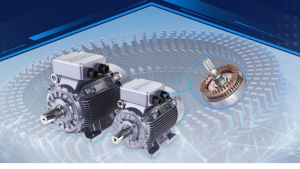
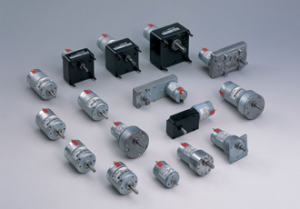
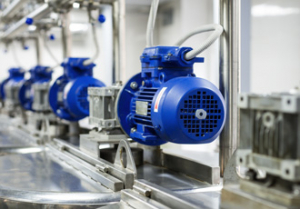

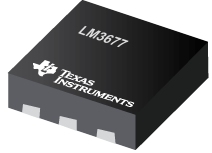

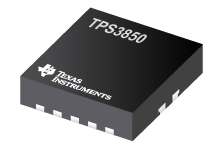
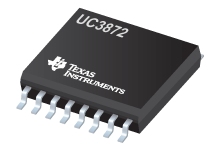

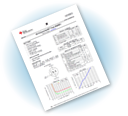

Write a comment
No comments